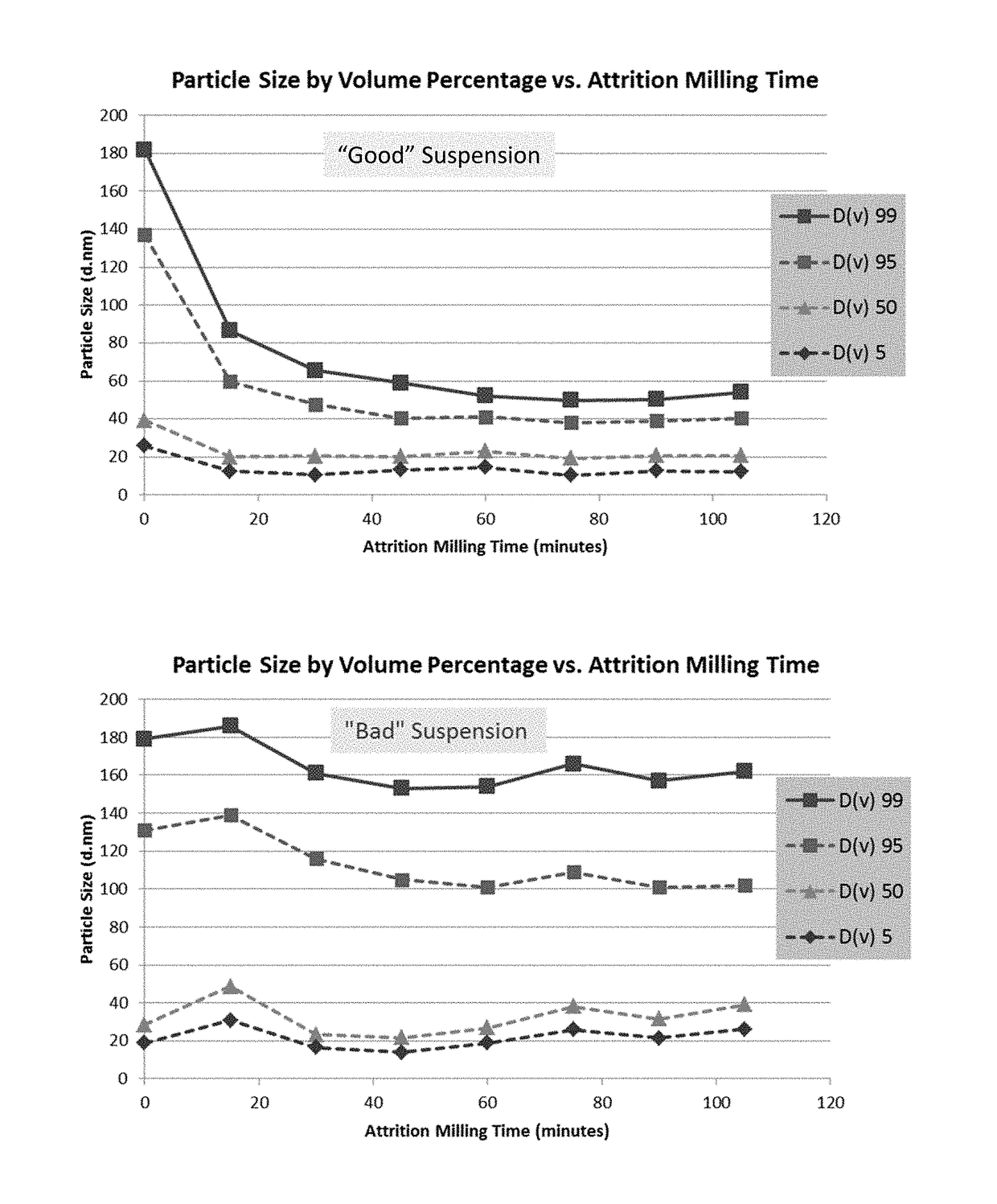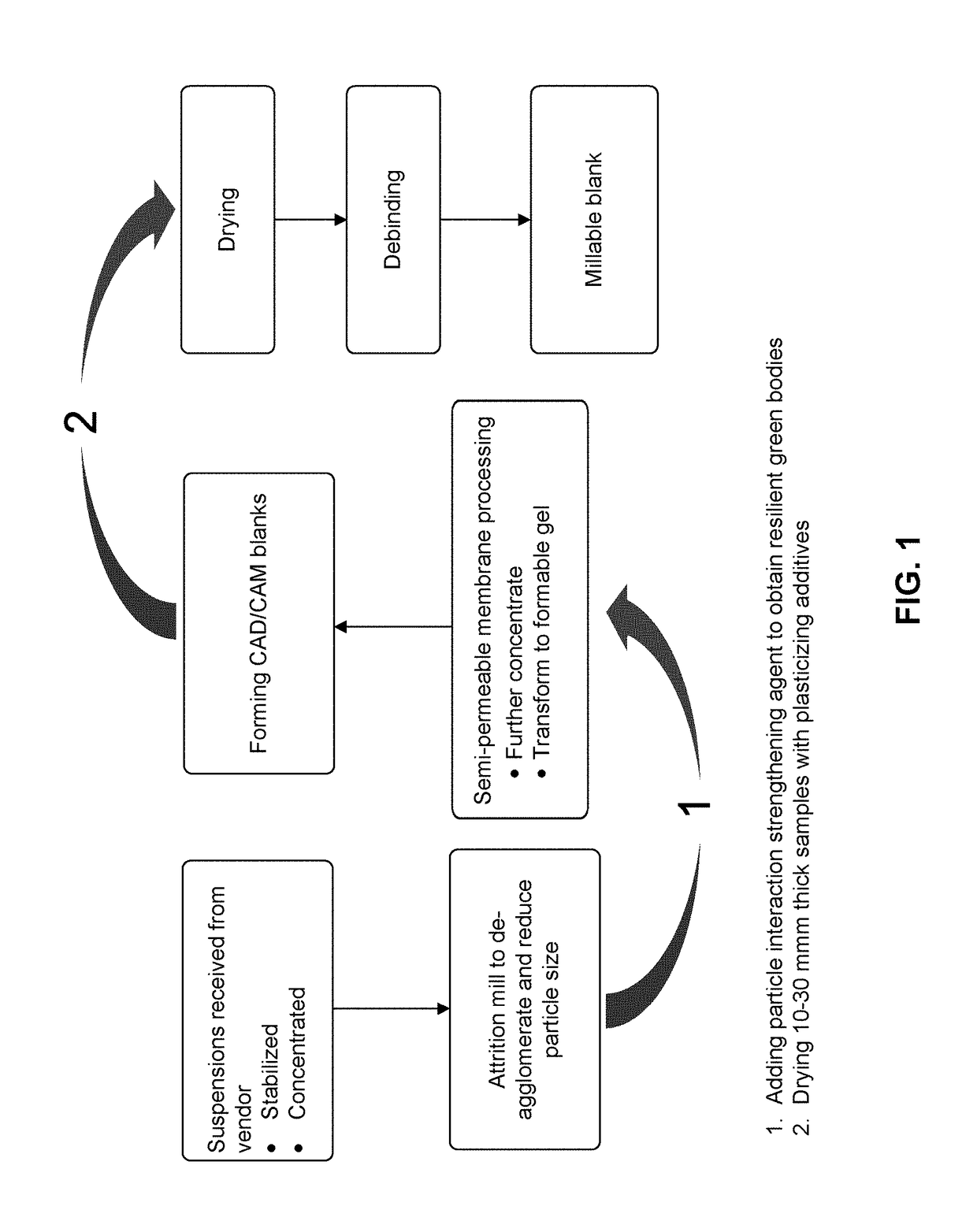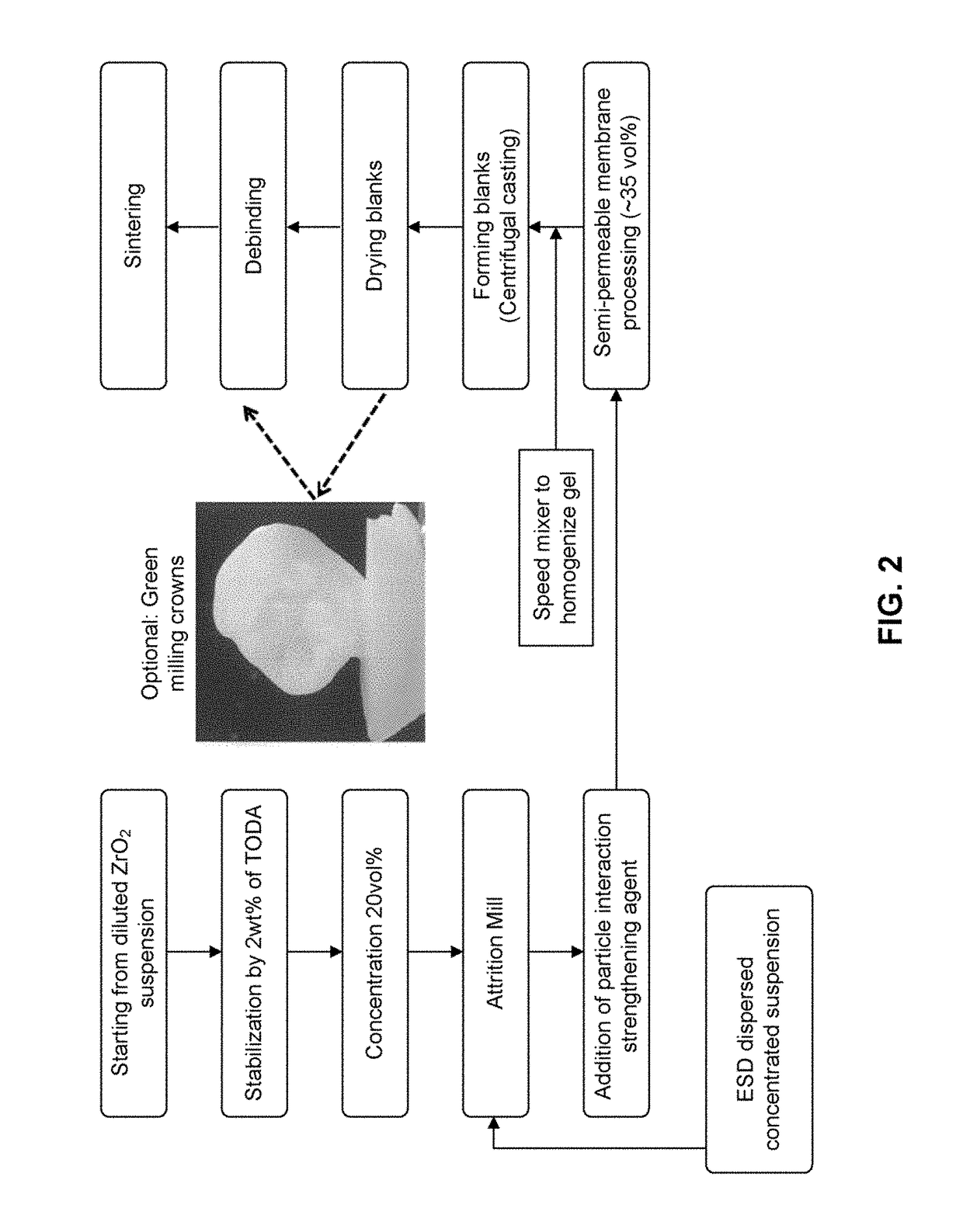Metal oxide ceramic nanomaterials and methods of making and using same
a technology of metal oxide ceramics and nanomaterials, applied in zirconium oxides, medical science, dentistry, etc., can solve the problems of significant reduction of mechanical strength, limited clinical use of multi-unit restorations, and inability to meet the requirements of multi-unit restorations, and lack of bulk shape consolidation technology in dental industry
- Summary
- Abstract
- Description
- Claims
- Application Information
AI Technical Summary
Benefits of technology
Problems solved by technology
Method used
Image
Examples
example 1
[0248]This example provides a description of making and characterizing nanozirconia gels and zirconia green bodies of the present disclosure.
[0249]The suspension preparation, concentration and attrition-milling steps were identical to Comparative Example 1. The said 55 wt % 2TODA zirconia suspension were then further concentrated to form a gel using osmotic processing method as described below: 50-200 grams of 55 wt % (16.7 vol %) suspension was poured in a dialysis membrane tubing (Spectra / Par dialysis membrane MWCO 6000-8000, tubing flat width 50 mm), while leaving ⅓ to ¼ of the tubing unfilled. The two ends of the tubing were closed by two clip closures. The loaded tubing was then immersed in a 20 wt % polyethylene glycol (molecular weight 35,000) (PEG35K) / water solution in a closed container. The container was then placed on a shaking table and continuously shaken at 125 rpm for 24 hours. The obtained gel is translucent and soft, with 81 wt % (41.1 vol %) solid loading. The tact...
example 2
[0252]This example provides a description of making and characterizing nanozirconia gels and zirconia green bodies of the present disclosure.
[0253]The 2TODA zirconia suspension preparation, concentration, attrition-milling steps and gel preparation steps were identical to Example 1 with the same amount of osmotic time of 24 hours. However, after attrition milling and before placing the suspension to dialysis tubing for osmosis, 1.0% by weight to solid zirconia of polyethylene glycol with number average molecular weight of 35,000 (PEG35K) (Example 2A) or 20,000 (PEG20K, obtained from SigmaAldrich) (Example 2B) was admixed to the suspension and homogenized on shaking table. The mixture was then loaded in dialysis tubing and osmosized for 24 hours. The obtained gel is translucent and very soft, with 76 wt % (34.2 vol %) solid loading. The gel was then centrifugal cast and dried identically as described in Example 1. The gel solid loading, gel softness, gel formability and green body su...
example 3
[0255]This example provides a description of making and characterizing nanozirconia gels and zirconia green bodies of the present disclosure.
[0256]The 2TODA zirconia suspension preparation, concentration and attrition-milling steps and gel preparation steps were identical to Example 1 with osmotic time of 22 hours. However, after attrition milling and before placing the suspension to dialysis tubing, 1.0% by weight to solid zirconia of PEG35K (Example 3A) or PEG20K (Example 3B) was admixed to the suspension, followed by admixing 0.05% by weight to solid zirconia of polyvinylalcohol with weight average molecular weight 9,000 to 10,000 (PVA, obtained from SigmaAldrich). After being shaken and homogenized, the mixture was then loaded in dialysis tubing and osmosized for 22 hours. The obtained gel was translucent and soft, with 77 wt % (35.4 vol %) solid loading. The gel was then centrifugal cast and dried identically as described in Example 1. The gel solid loading, gel softness, gel f...
PUM
| Property | Measurement | Unit |
|---|---|---|
| yield stress | aaaaa | aaaaa |
| viscosity | aaaaa | aaaaa |
| size | aaaaa | aaaaa |
Abstract
Description
Claims
Application Information
 Login to View More
Login to View More - R&D
- Intellectual Property
- Life Sciences
- Materials
- Tech Scout
- Unparalleled Data Quality
- Higher Quality Content
- 60% Fewer Hallucinations
Browse by: Latest US Patents, China's latest patents, Technical Efficacy Thesaurus, Application Domain, Technology Topic, Popular Technical Reports.
© 2025 PatSnap. All rights reserved.Legal|Privacy policy|Modern Slavery Act Transparency Statement|Sitemap|About US| Contact US: help@patsnap.com



